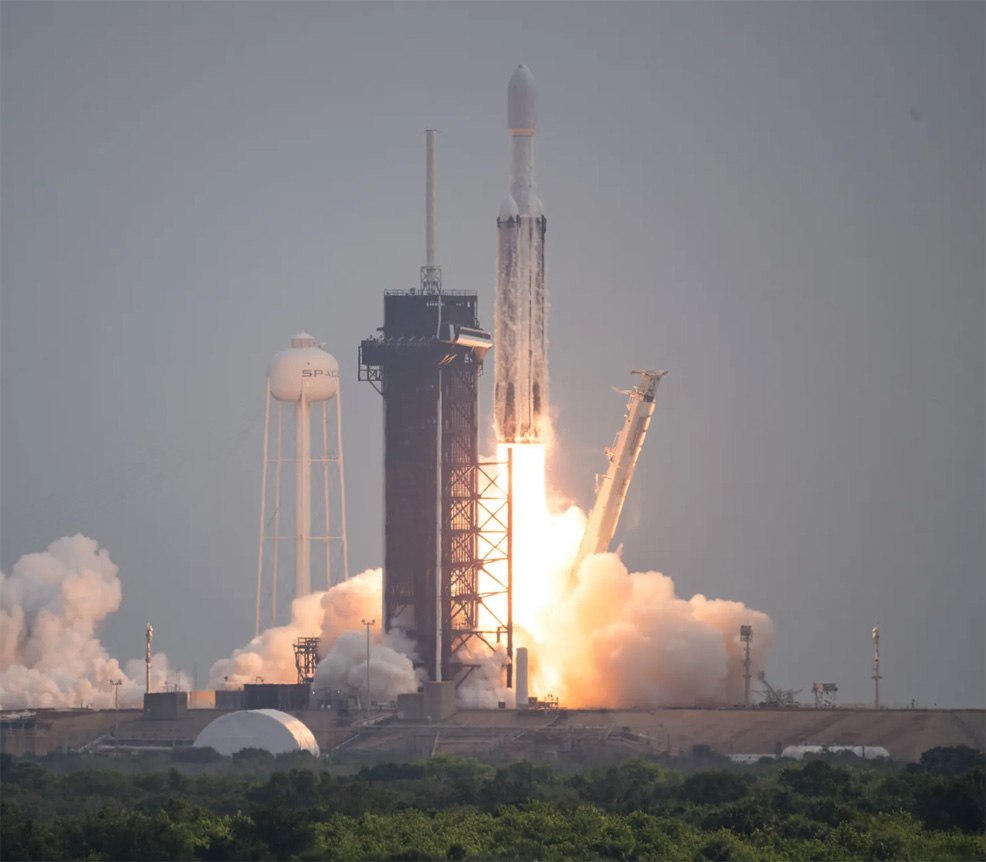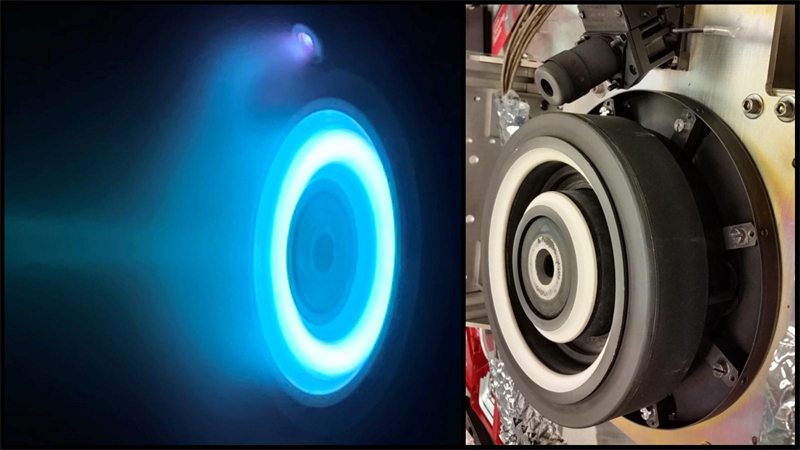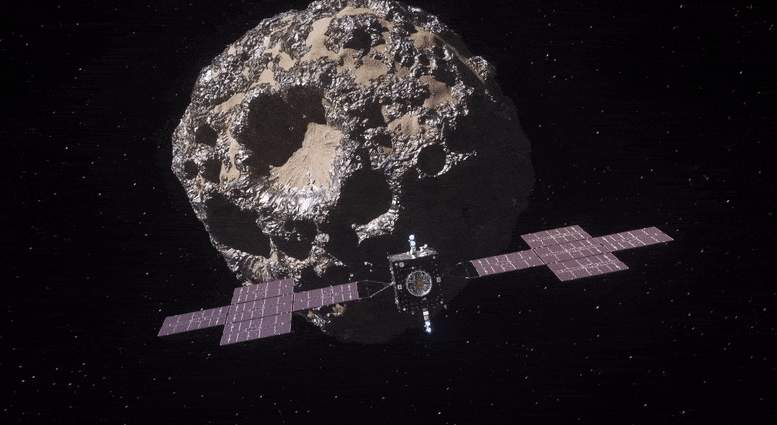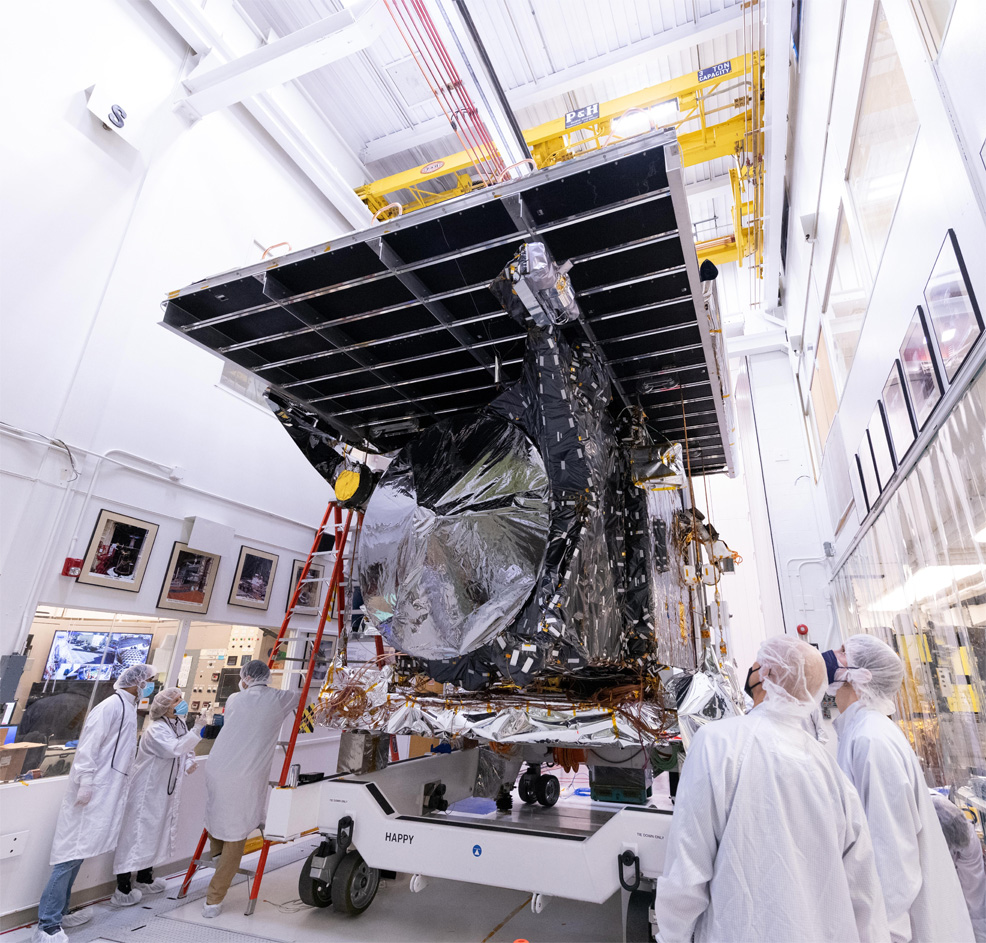
14th October 2023 NASA probe to visit large metallic asteroid in 2029 NASA has successfully launched its Psyche spacecraft, which now begins a six-year journey to the main belt asteroid 16 Psyche.
A SpaceX Falcon Heavy blasted off yesterday from the Kennedy Space Center in Florida, carrying NASA's latest exploration mission. After reaching space and separating from the rocket, Psyche successfully established two-way communication with NASA's Deep Space Network complex. Initial telemetry reports show that the spacecraft is in good health. Psyche now begins a six-year journey of 3.5 billion km (2.2 billion mi) to the main asteroid belt. It will travel to 16 Psyche, a metal-rich asteroid orbiting the Sun between Mars and Jupiter. The probe will also test a new Deep Space Optical Communications technology, the first demonstration of optical communications beyond the Earth-Moon system. Another first for this mission is the propulsion system, based on Hall-effect thrusters, which have never been used beyond lunar orbit before. Rather than a chemically-powered rocket engine, Psyche is fitted with four SPT-140 engines (SPT stands for Stationary Plasma Thruster). This electric system captures sunlight from solar panels and then expels charged atoms, or ions, of xenon gas, creating a thrust that gently propels the spacecraft. The xenon plasma emits a blue glow as the thruster operates. NASA believes this super-efficient mode of travel could be used in future missions to deep space.
The first 100 days of the mission are a "checkout" period, to ensure all flight systems are healthy. During this time, the Deep Space Optical Communications technology demonstration will be powered on. Psyche will be roughly 7.5 million km (4.7 million mi) from Earth when this high-data-rate optical, or laser, system is tested for the first time. Checkout of the science instruments – a magnetometer, gamma-ray and neutron spectrometer, and multispectral imager – will occur a few weeks after that. During this period, the imager will take its first images for calibration purposes. An automatic feed of publicly viewable raw images will then start going online and be added for the remainder of the mission. In May 2026, the spacecraft will pass within about 3,000 km (1,864 mi) of Mars, using its gravity as a slingshot to speed it along. Orbital insertion at Psyche is scheduled for August 2029. The probe will investigate the 279 km (173 mi) diameter asteroid for a total of 26 months, operating until late 2031. Psyche is the only metal-class asteroid to ever be explored. Because the iron-nickel metal content is so ultra-high, scientists believe that it may be the remnant core of a planetesimal, a building block of an early planet. The amount of metal it contains is likely far more than has ever been mined on Earth. This could make it an extremely valuable target for commercial asteroid mining in the future.
When the first navigation images and measurements of 16 Psyche are taken in May 2029, the asteroid will appear just a few pixels wide. The spacecraft will then use its electric propulsion system to position itself to be captured by the asteroid's gravity, in late July 2029. At that point, the first close-up images are expected to be returned. Psyche will then begin a series of orbits, varying in altitude from 700 km (435 mi) to as close as 75 km (47 mi). During the two years of its science phase, the probe will perform detailed mapping, topographic, magnetic, and gravitational investigations, as well as determining the chemical composition of the surface. NASA hopes it can help answer questions such as: • Is 16 Psyche the stripped core of a differentiated planetesimal, or was it formed as an iron-rich body? • What were the building blocks of planets? • If 16 Psyche was stripped of its mantle, when and how did that occur? • If 16 Psyche was once molten, did it solidify from the inside out, or the outside in? • What are the major alloy elements that coexist in the iron metal of the core? • What are the key characteristics of the geologic surface and global topography? • Does 16 Psyche look radically different from known stony and icy bodies? • How do craters on a metal body differ from those in rock or ice?
"We said 'goodbye' to our spacecraft, the centre of so many work lives for so many years – thousands of people and a decade," said Prof. Lindy Elkins-Tanton, Principal Investigator at Arizona State University in Tempe. "But it's really not a finish line; it's a starting line for the next marathon. Our spacecraft is off to meet our asteroid, and we'll fill another gap in our knowledge – and colour in another kind of world in our Solar System." "I am excited to see the treasure trove of science Psyche will unlock as NASA's first mission to a metal world," said Nicola Fox, associate administrator for the Science Mission Directorate at NASA Headquarters in Washington. "By studying asteroid Psyche, we hope to better understand our universe and our place in it, especially regarding the mysterious and impossible-to-reach metal core of our own home planet, Earth." "Psyche is an ideal platform to demonstrate NASA's optical communications goal to get high-bandwidth data into deep space," said Prasun Desai, the acting associate administrator of Space Technology Mission Directorate (STMD) at NASA Headquarters. "It's exciting to know that, in a few short weeks, Deep Space Optical Communications will begin sending data back to Earth to test this critical capability for the future of space exploration. The insights we learn will help us advance these innovative new technologies and, ultimately, pursue bolder goals in space." "Congratulations to the Psyche team on a successful launch, the first journey to a metal-rich asteroid," said NASA Administrator Bill Nelson. "The Psyche mission could provide humanity with new information about planet formation while testing technology that can be used on future NASA missions."
Comments »
If you enjoyed this article, please consider sharing it:
|










